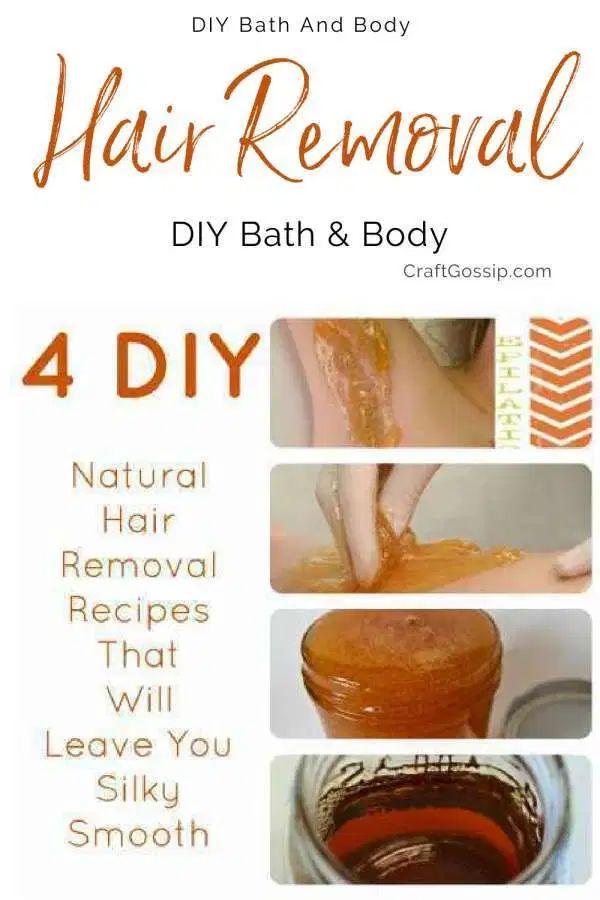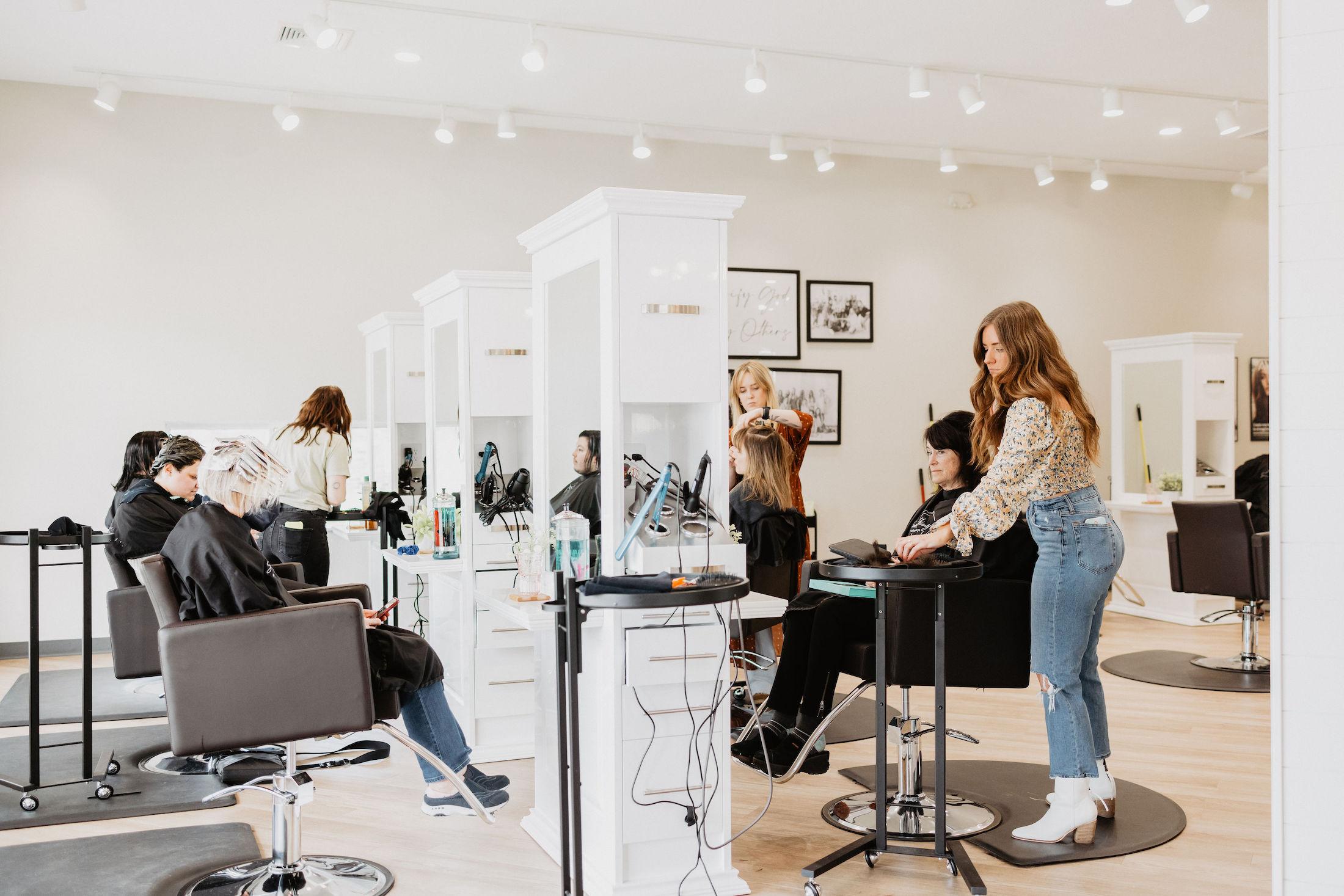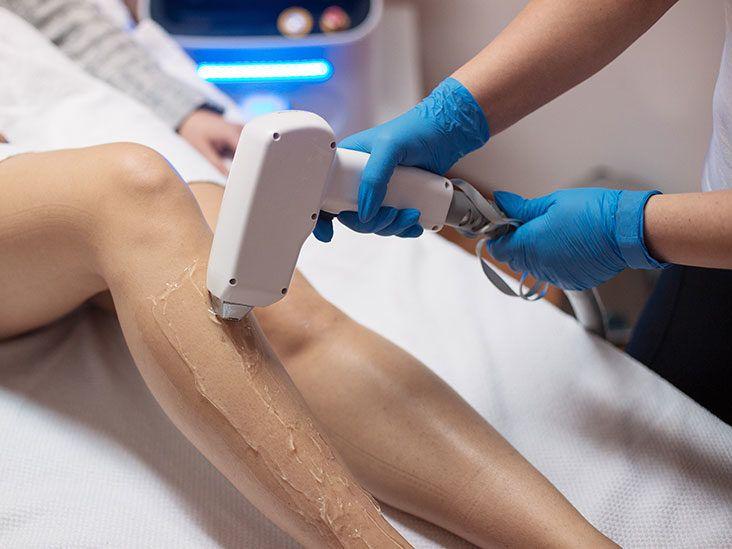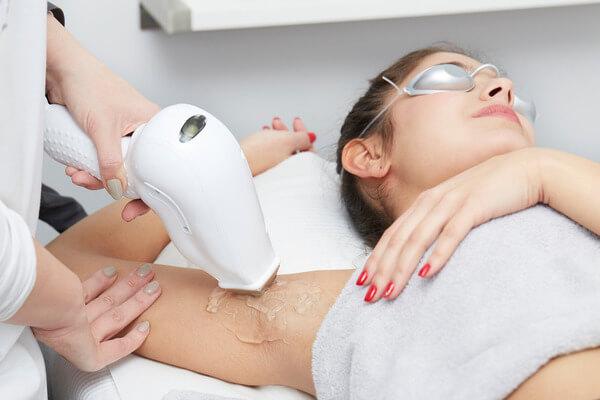Imagine a world where you’re perpetually smooth, confident, and ready to conquer whatever comes your way. Whether you’re prepping for an impromptu beach day or simply want that silky-smooth feel under your favorite outfit, hair removal is an essential part of modern grooming. But let’s face it, the journey to flawless skin can be a bumpy road, filled with confusing choices and occasional mishaps. Fear not, friend! “Smooth Moves: Your Guide to 10 Hair Removal Methods” is here to demystify the process and transform your grooming routine into a spa-like ritual. From age-old techniques to innovative solutions, this guide will arm you with the knowledge you need to find your perfect match in the world of hair removal. So grab a comfy seat, maybe even light a calming candle, and get ready to explore the many ways you can achieve that coveted, silky-smooth finish.
Table of Contents
- Smooth Sailing: Choosing the Best Method for Your Skin Type
- The At-Home Experience: DIY Hair Removal Tips and Tricks
- Salon vs. DIY: Pros and Cons of Professional Hair Removal
- Perfecting the Technique: Avoiding Common Hair Removal Mistakes
- Aftercare Essentials: Keeping Your Skin Smooth and Healthy
- Q&A
- The Conclusion
Smooth Sailing: Choosing the Best Method for Your Skin Type
Choosing the perfect hair removal method can be a voyage across a sea of options. But worry not, dear reader—in this section, we’ll navigate through the calm waters of personalized hair removal approaches tailored to your unique skin type.
For those with **sensitive skin**, the goal is to avoid irritation and redness, which means opting for gentle methods. Shaving with a moisturizing shave gel can work wonders, just remember to always use a fresh blade. **Depilatory creams** are another choice—they dissolve hair just below the skin’s surface, but always do a patch test first to ensure there are no allergic reactions.
- Shaving: Use hydrating shave gel and change blades frequently.
- Depilatory creams: Perform a patch test to avoid allergies.
Those with **dry skin** need to focus on hydration. **Waxing** might seem counterintuitive, but it removes hair from the root, reducing the need for frequent hair removal sessions and minimizing skin stress. Follow up with a rich, nourishing lotion post-wax. If your skin is too dry, consider **epliation**—it pulls hair out similar to waxing but can be gentler when enjoyed at the right angle.
- Waxing: Post-treatment hydration is crucial.
- Epliation: Can be gentler and less frequent.
**Oily skin** can face unique challenges, such as easy clogging of pores. **Laser hair removal** may be your best friend here. It’s a more permanent solution, and while it requires several sessions, it results in smooth skin without the sticky residue. For a more temporary fix, consider **sugaring**—an ancient method using natural ingredients that can help avoid pore blockage.
- Laser hair removal: Offers longer-term results, ideal for oily skin.
- Sugaring: Uses natural ingredients for gentle hair removal.
| Skin Type | Best Methods |
|---|---|
| Sensitive | Shaving, Depilatory creams |
| Dry | Waxing, Epilating |
| Oily | Laser hair removal, Sugaring |
**Normal skin** users have the luxury of diversity. You can choose from a plethora of methods without much worry about adverse reactions. **Threading** can offer precise hair removal, especially for facial hair, and **classic shaving** remains ever reliable. Experiment with different options to find what suits your lifestyle best.
- Threading: Provides precision for areas like the eyebrows.
- Classic shaving: Remains a close-to-skin, quick solution.

The At-Home Experience: DIY Hair Removal Tips and Tricks
Hair removal at home can be an empowering and convenient alternative to salon treatments. Whether you’re looking for a permanent solution or something quick and easy, the DIY route offers a variety of options tailored to your preferences and pain tolerance. Here are a few standout methods that can help you achieve smooth, touchable skin from the comfort of your home.
First off, let’s talk about two classic methods: **shaving** and **waxing**. Shaving is the ultimate go-to for its simplicity and speed. Just lather up with some moisturizing shave gel, and glide your razor effortlessly for silky results. Waxing, on the other hand, grabs hair from the root, offering longer-lasting smoothness. Pre-made wax strips make this option almost foolproof, so you can wax confidently even as a newbie.
Next up, **epilation** and **depilatory creams** bring a bit of tech and chemistry into the mix. Epilators are electric devices that yank hair from the roots, delivering results similar to waxing but with a less messy procedure. Depilatory creams break down the hair structure, allowing you to simply wipe the hair away. Make sure to do a patch test first, as some skin types might be sensitive to the chemicals.
For those seeking a greener approach, **sugaring** and **threading** offer environmentally friendly and natural ways to remove hair. Sugaring involves applying a sugar-based paste that adheres to hairs and pulls them out from the roots. It’s gentle on the skin and easy to make at home with simple ingredients like sugar, lemon, and water. Threading, especially popular for facial hair, uses a twisted cotton thread to catch and pull out hairs. With a bit of practice, threading can be a precise and efficient method.
| Method | Best For | Pros | Cons |
|---|---|---|---|
| Shaving | Legs, Underarms | Quick, Pain-free | Frequent touch-ups |
| Waxing | Arms, Legs, Bikini Line | Long-lasting | Painful, Messy |
| Epilation | Legs, Arms | Effective, Long-lasting | Painful, Noisy |
| Threading | Facial Hair | Precise, Gentler on Skin | Requires Skill |

Salon vs. DIY: Pros and Cons of Professional Hair Removal
Choosing between professional and DIY hair removal often boils down to your priorities, whether it’s cost, convenience, or the quality of results. Each method has its distinct advantages and drawbacks. Let’s dive into the comparisons to help you decide what suits your lifestyle best.
Professional Hair Removal: The Perks and Pitfalls
- Pros:
- Expertise: Treatments are performed by skilled professionals, ensuring precision and safety.
- Better Results: Techniques such as laser hair removal or electrolysis offer long-lasting and sometimes permanent results.
- Comfort: Many salons provide a comfortable and luxurious environment, making the experience more enjoyable.
- Cons:
- Cost: Professional services can be pricey, especially for treatments requiring multiple sessions.
- Time Commitment: Scheduling appointments and commuting to the salon can be time-consuming.
- Potential Side Effects: Although performed by experts, some treatments may result in temporary redness or irritation.
DIY Hair Removal: Freedom and Flaws
- Pros:
- Cost-Effective: Over-the-counter products and home devices are generally much cheaper than salon visits.
- Convenience: You can remove hair at any time within the comfort of your home.
- Variety: From waxing kits to epilators, the market is flooded with diverse options to fit your needs.
- Cons:
- Risk of Mishaps: Inexperience can lead to burns, cuts, or ineffective hair removal.
- Results May Vary: DIY methods often don’t achieve the same level of smoothness or longevity as professional treatments.
- Time-Consuming: Without professional speed and skill, DIY methods can take longer to complete.
| Aspect | Salon | DIY |
|---|---|---|
| Cost | High | Low |
| Convenience | Moderate | High |
| Results | Long-lasting | Variable |
| Time | Flexible | At your own pace |

Perfecting the Technique: Avoiding Common Hair Removal Mistakes
Are you tired of dealing with awkward stubble or missing spots after a hair removal session? Nailing the perfect technique is crucial for achieving silky smooth skin, but even seasoned pros can make mistakes. Let’s dive into some common mishaps and how to dodge them for a flawless finish.
Prepping the Skin
Skipping the prep phase is a frequent blunder that can lead to irritation and ineffective hair removal. Always begin with clean, exfoliated skin to remove dead cells and allow for a closer shave or wax. If you’re using epilators or lasers, dry your skin thoroughly to prevent malfunction or discomfort. The golden rule? **Preparation is key!**
Choosing the Right Tool
Not all hair removal tools are created equal. Some methods work better for certain skin types and hair textures. For example:
- **Shaving** is great for quick fixes but can cause ingrown hairs if not done properly.
- **Waxing** yields longer-lasting results but can be painful if done with the wrong wax.
- **Laser treatments** are effective but require consistent sessions and a consultation with a dermatologist to avoid burns.
Here’s a quick comparison to help you decide:
| Method | Best For | Considerations |
|---|---|---|
| Shaving | All skin types | Daily maintenance, risk of cuts |
| Waxing | Coarse hair | Painful, skin sensitivity |
| Laser | Pigmented hair | Costly, multiple sessions |
Post-Removal Care
Not paying attention to your post-hair removal routine can leave your skin red, bumpy, and less than perfect. After removing hair, apply a soothing lotion or aloe vera gel to calm any irritation. Avoid hot showers, sun exposure, and tight clothing for at least 24 hours to allow your skin time to heal. Hydrated skin is happy skin, so keep up with a moisturizing regimen to maintain that smooth glow.

Aftercare Essentials: Keeping Your Skin Smooth and Healthy
Achieving smooth, hair-free skin is only half of the journey; the other half involves taking proper care of your skin post-hair removal. Regardless of whether you’ve waxed, shaved, or tried a trendy new method, **aftercare** is key to maintaining that silky softness. Let’s dive into some essential tips and tricks to keep your skin healthy and irritation-free.
- Hydration is Your Best Friend: Right after hair removal, your skin can be extremely sensitive and prone to dryness. Apply a generous amount of a gentle, fragrance-free moisturizer to soothe any irritation and keep your skin hydrated.
- Avoid Sun Exposure: Your skin is more susceptible to sun damage immediately after hair removal. Slather on a broad-spectrum sunscreen with an SPF of at least 30 to protect against harmful UV rays.
- Skip the Fragrance: For the first 24 to 48 hours, it’s best to stay away from fragranced lotions and deodorants which can further irritate your skin.
- Wear Loose Clothing: Opt for loose, breathable fabrics to prevent chafing and allow your skin to breathe post-treatment.
Post-hair removal irritation is common, but there are ways to mitigate it. If redness, bumps, or ingrown hairs are a concern, consider using products infused with natural soothe-alls like aloe vera or chamomile. These ingredients are renowned for their anti-inflammatory properties and can help calm the skin. A cold compress can also do wonders if you’re experiencing significant discomfort, instantly providing relief and reducing swelling.
Here’s a quick reference table to help you choose the perfect soothing agent:
| Soothe-All Ingredient | Benefit |
|---|---|
| Aloe Vera | Hydrates and reduces redness |
| Witch Hazel | Reduces inflammation and soothes |
| Coconut Oil | Locks in moisture and repairs skin |
| Tea Tree Oil | Prevents and treats ingrown hairs |
Maintaining smooth, healthy skin after hair removal is as simple as incorporating a few mindful steps into your routine. Make sure to exfoliate regularly—gently, of course—to prevent buildup that can cause ingrown hairs. Additionally, your diet can also play a significant role in skin health. Foods rich in vitamins A and E, like carrots, spinach, and almonds, can provide the nutrients your skin needs to stay radiant.
Q&A
Q&A: Smooth Moves – Your Guide to 10 Hair Removal Methods
Q1: What inspired you to write “Smooth Moves: Your Guide to 10 Hair Removal Methods”?
A1: Oh, great question! We’ve all been there—staring at a bewildering array of hair removal products, each promising smooth, flawless skin. It felt like the right time to demystify this landscape and help people navigate their options with confidence.
Q2: How did you decide which hair removal methods to include in the guide?
A2: I wanted to cover the most tried-and-true methods that people are already talking about, plus throw in a few lesser-known but highly effective options. I did a ton of research and also gathered real-life feedback to make sure we’re covering all the bases.
Q3: What’s the most surprising thing you discovered while researching hair removal methods?
A3: Definitely the variety of high-tech options out there! Who knew that you could zap away hair with laser beams in the comfort of your own home? The rapid advancements in at-home devices were both surprising and fascinating.
Q4: Do you have a personal favorite hair removal method? Why?
A4: I’m partial to sugaring—it’s a sweet alternative to waxing that’s less painful and oh-so-natural. Plus, it leaves my skin feeling incredibly smooth and less irritated. It’s a win-win!
Q5: Can you give us a sneak peek into one of the lesser-known methods featured in the guide?
A5: Absolutely! One method that’s gaining traction is epilation. It’s a nifty little device that plucks hair from the root, and while it might sound daunting, the newer models are designed to minimize discomfort. It’s great for long-lasting smoothness.
Q6: How do you address the concern of pain associated with many hair removal techniques?
A6: I hear you—nobody enjoys pain! The guide dives deep into each method’s pain factor and provides tips to mitigate it. Whether it’s using numbing creams, following up with soothing aloe vera, or opting for less painful techniques, we’ve got plenty of pain-managing tips.
Q7: How important is skin type when choosing a hair removal method?
A7: Super important! Skin type can dictate both the effectiveness and the comfort level of the hair removal method. The guide includes a handy chart that matches skin types with the best-suited hair removal methods, making it easier to choose.
Q8: What are some common hair removal myths you debunk in the guide?
A8: One big myth is that shaving makes hair grow back thicker. Not true! It might feel coarser because it’s cut bluntly at the surface. Another myth is that laser treatment is only for light skin. Newer lasers can effectively treat darker skin tones as well.
Q9: Any tips for someone who’s new to at-home hair removal methods?
A9: Start simple! I’d suggest trying shaving or a high-quality at-home waxing kit to get the hang of things. Make sure to follow up with proper aftercare—think moisturizers and aloe vera gels—to keep your skin happy and smooth.
Q10: Where can readers find more information or share their experiences with the methods you’ve discussed?
A10: They can head over to our website, where they’ll find a vibrant community of silky-smooth enthusiasts eager to share tips and experiences. Plus, we have a forum where readers can ask questions, swap stories, and even post before-and-after pics!
Q11: What’s next for you in the realm of beauty and self-care guides?
A11: I’m working on a comprehensive skincare routine guide that covers everything from selecting the right products to seasonal skin care tips. But for now, I’m all about helping everyone achieve their smoothest, most confident selves!
Q12: Any parting words of wisdom for our readers?
A12: Always remember, there’s no one-size-fits-all in hair removal. Experimenting to find what works best for you is part of the journey. Embrace the process, enjoy the smooth results, and know that every option in the guide is a step towards a more confident you!
So grab your copy of “Smooth Moves: Your Guide to 10 Hair Removal Methods,” and let’s tackle that hair with flair and finesse!
The Conclusion
And there you have it, folks — your ultimate guide to smooth moves and hair-free grooves! Whether you’re a waxing warrior, a stubble-stopping shaver, or contemplating the laser leap, there’s a perfect match for everyone in our fab top ten. Remember, the journey to effortlessly sleek skin is as individual as you are.
So go on, pick your tool of choice, and say goodbye to those pesky hairs with newfound confidence. Here’s to feeling fabulous in your own skin, one smooth move at a time. Stay silky, stay sensational, and until next time, keep shining! 🌟






